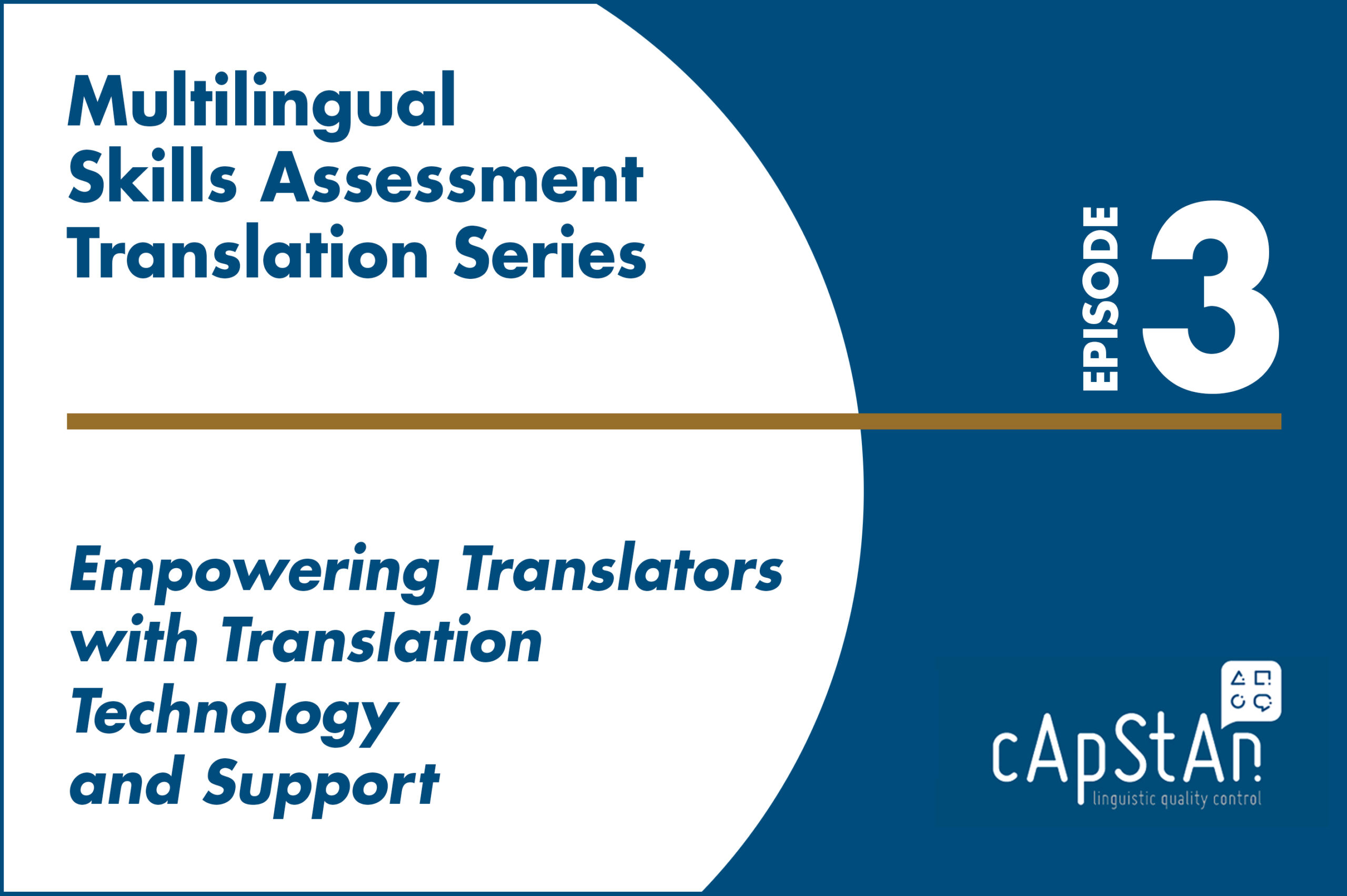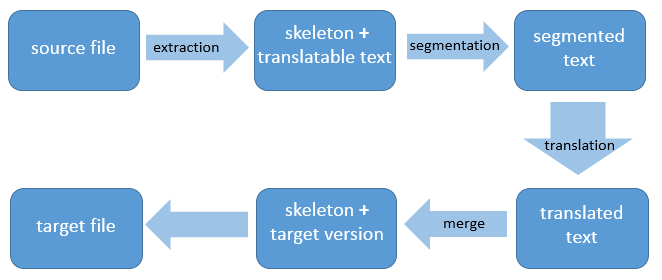
Multilingual Skills Assessment Translation Series, Episode 3: Empowering Translators with Translation Technology and Support
Welcome to the third episode of our “Multilingual Skills Assessment Translation Series”. The primary objective of this series is to provide a comprehensive illustration of the complexities inherent in test translation. By doing so, we aim to underscore the immense value derived from establishing a robust linguistic quality assurance design. In this episode our translation technologist prepares the translation files in a computer-assisted translation tool, or CAT tool, and provides support to translators.
Let’s once again take the example of the Chaos Management Skills Assessment (CMSA), a fictional test designed to evaluate consultants’ competencies of in helping companies in damage control situations. This test is administered in 12 languages, building upon the previous cycle of the assessment. In the previous episode we performed a translatability assessment and developed item-by-item translation and adaptation notes to assist translators in their work. Now we face the task of setting them up for success by ensuring that they make the best possible use of translation technology.
Following productive discussions with the client’s platform engineer and our translation technologist, a mutual decision is reached to adopt the widely recognized international standard known as tagged XML localization interchange file format (XLIFF). This standardized format ensures seamless localization of the content. It could have been another structured file format, such as JSON.
Preparation of translation files
To empower our translators, we provided them with user-friendly files that were carefully prepared to optimize their efficiency and productivity throughout the translation process.
- File preparation includes text extraction and segmentation.
- Extraction is about deciding what parts of the document are translatable and what parts are not.
- Non-translatable parts are locked or hidden by the translation technologist. These non-translatable parts could be elements that the respondent will not see; or placeholders that stand for graphical items, for example.
- Segmentation involves splitting the text into small, manageable parts (normally sentences).
- The less untranslatable content translators are exposed to, the less unnecessary work, and fewer chances for introducing errors.

Support to translators
The translation technologist also prepared a translation kit, which contained language assets such as a glossary and a style guide. Adherence to the glossary and style guide will be checked automatically at the translation verification stage (in the next episode). Additionally, clear instructions and a dedicated helpdesk are made available.
As part of the support to translators, the project manager organized:
- Short, web-based training sessions that covered the specifics of localizing the CMSA instruments.
- Instructions for the use of the testing platform (for previews), the CAT tool and other translation technology.
- Hands-on exercises (which proved to be particularly effective).
- A ticketing system aimed at maximizing the efficiency of the helpdesk, maintained by two translation technologists (who redirected the question to platform engineers as needed).
In this project, each player did what s/he knew how to do best, and the final result was highly satisfactory.
In the next episode, we shall describe linguistic quality control (LQC) routines that should take place after the translation process and before production stage. There is no high-quality test translation without a robust quality assurance design!
……………………………………………………………………………………………………………………..…
Meanwhile, if you’d like to learn about translation technology and support to translators, do fill the Contact form, and we’ll get back to you as soon as we can.